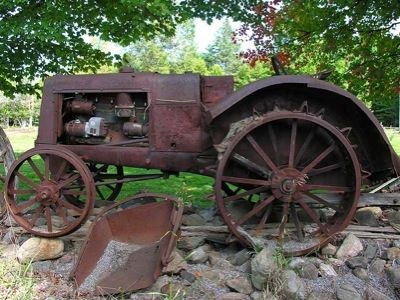Past Columns by The Lawn Coach. Lawn Tips, Lawn Advice and Lawn Care help for all your lawn care needs. by The Lawn Coach. Lawn Tips, Lawn Advice and Lawn Care help for all your lawn care needs.

Why is My Lawn All Rusty?
Q: Dear Lawn Coach,
As we walk through our lawn, we seem to be tracking a rust colored powder on our shoes. The blades of grass seem to be covered with this stuff. What is it? Should we be concerned?
Denise
A: Hi Denise,
Rust is just one of about a gagillion diseases (okay, so maybe it’s more like 15) that your lawn could get during the course of a normal growing season. It is not seen every year, but when the grass growth is stunted during the heat of the Summer, many susceptible grasses can be affected.
I like to equate Rust to a really annoying pimple right on the tip of your nose. You can’t miss it no matter how hard you try. It’s nearly impossible to cover up and you’re praying that the neighbors don’t start pointing and whispering. That said, it’s really not causing any severe problems under normal circumstances.
The lawn will take on a yellowish, reddish-orange appearance. When you mow, it will often kick up a mild cloud of dust which I can’t help but call “Rust Dust”, though I’m apparently the only one. It’ll get on your shoes as you’ve indicated, and during particularly dewy mornings, it can get slimy and truly gross. This rusty stuff is actually pustules that contain the spores of the fungus that causes Rust.
Can it cause damage? Sure. Like any disease, there’s always the chance that it’ll get out of hand and actually kill some grass. This tends to be the exception, not the rule. When night temperatures are around 70 - 75 degrees and day temperatures are around 85-95 degrees, AND the grass stays wet for long periods of time, AND you happen to have grass species that are susceptible, AND it’s humid out, AND the soil fertility is low, AND the grass is under stress for some other reason, you’re just asking for trouble from Rust. In order for rust to get really severe though, you pretty much need for all those factors to be present.
SO, what to do? First, let’s look at the factors described above. You can’t control temperature, so throw that one away. You can make sure not to water every day, so add that to the “to not do” list. You can add new, more Rust tolerant grasses to the lawn (email me if you want to find out how). You cannot control humidity, so scratch it. You CAN make sure to fertilize adequately, so un-bury the spreader and get to work.
The big chemical companies are very actively seeking out chemical controls for many lawn care problems. To my knowledge, Rust isn’t one of them. Since the damage is pretty minimal, even the most ardent anti-environmentalist probably wouldn’t resort to spraying his/her lawn with a fungicide for Rust. It’d be like taking a $300 pill for that big nose pimple I mentioned earlier. I do know a few folks who may be vain and rich enough to resort to that, but the drug manufacturer likely wouldn’t cover their costs is mass sales when people know they can just wait it out in a dark living room. Same principle applies here.
Just make sure the fertility is good, hold off on additional watering for a little while, and if it’s really bad, plan on getting some additional seed into the lawn via an aerator or slice seeder. Once temperatures change and humidity subsides, you’ll be Rust free once again!
Tuesday, September 9, 2008


